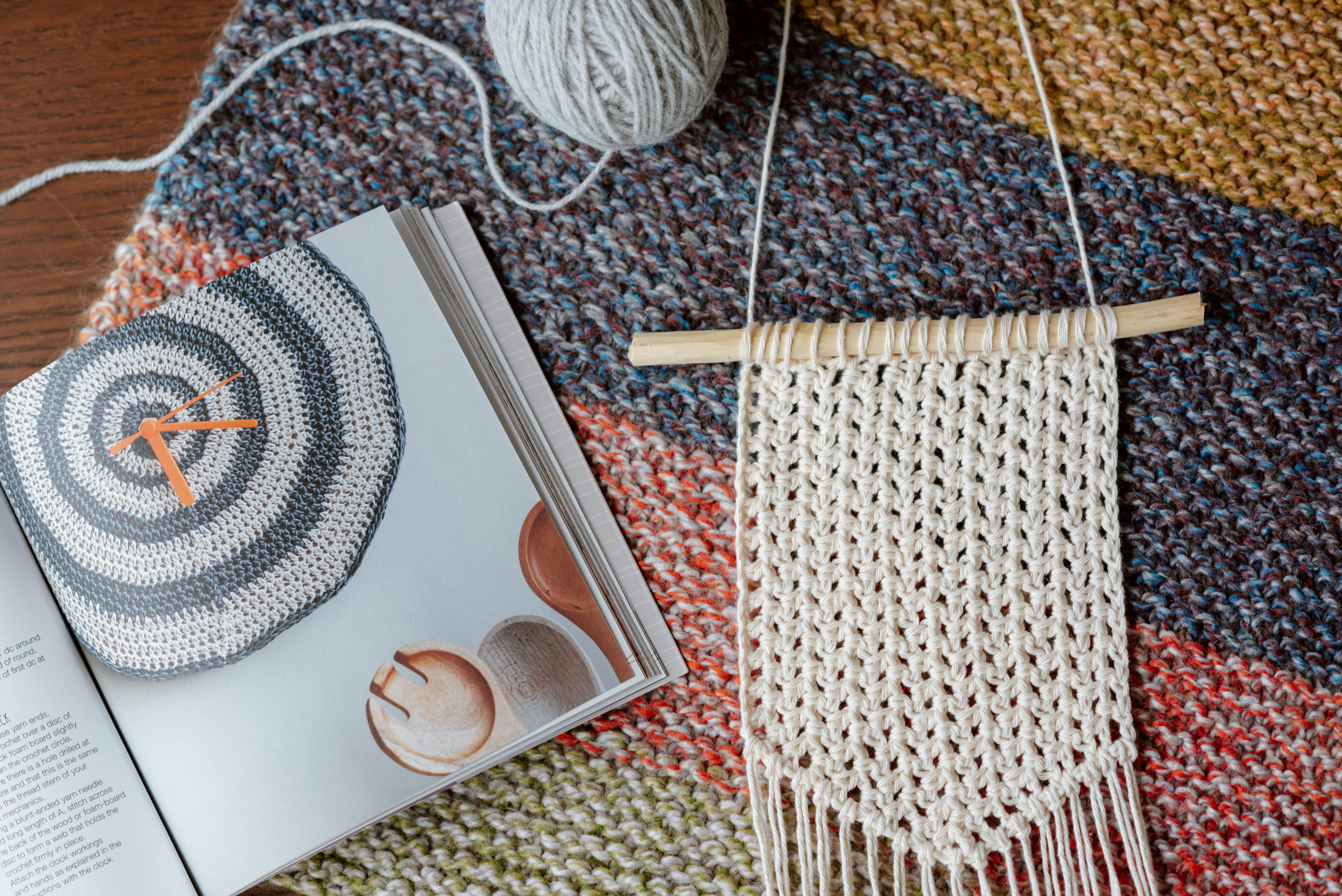Making a fabric ball is a great and simple activity which can be enjoyed by both adults and children alike. It is an easy project which can be completed using a few basic supplies that you may already have at home. With just some fabric, thread, scissors, and a needle, you can create a fun and decorative item for your home or to give as a gift. In this guide, we’ll walk you through the steps of making your own fabric ball.To make a fabric ball, you will need fabric, stuffing, scissors, thread, pins, and a needle.
Assembling the Fabric
Making a ball out of fabric requires some skill and preparation. First, you will need to choose the type of fabric that you want to use for your project. You should choose a lightweight fabric that is easy to work with and can be easily shaped into a ball. Once you have chosen the fabric, you can begin assembling it. You will need to cut the fabric into small strips, then sew them together in a circular pattern. Make sure to overlap each strip as you sew them together so that they form a strong bond. Once all of the strips are sewn together, it is time to shape it into a ball. Start by folding the edges inwards and then rolling the pieces until they form a ball shape. Once your fabric is shaped, you can use ribbons or other decorative elements to finish off your project.
Making a fabric ball is an easy and fun craft project that can be used for various creative projects or even as décor items for your home or office space. With some patience and skill, anyone can make an attractive and unique looking ball from fabric with ease!
Cutting the Fabric for the Ball
Making a ball out of fabric is a fun and easy project that everyone can do. To get started, you’ll need to cut the fabric for the ball. It’s important to use a fabric that has some body, like a cotton-poly blend or wool blend, so that it holds its shape when it’s stuffed. Start by cutting two circles of equal size with a diameter of around 20 inches. Make sure to use sharp scissors so that the edges are nice and clean. If you don’t have a circular template, you can make one out of cardboard or use a plate as a guide.
Next, you’ll need to cut two strips of fabric in the same color as your circles. The strips should be 4 inches wide and about 40 inches long. This will be used to make the seams on either side of your ball. Make sure to use straight pins when sewing these pieces together so that everything stays in place.
Finally, you’ll need to cut two more strips of fabric in the same color as your circles but this time they should be 6 inches wide and about 50 inches long. This will be used for making the ties on either side of your ball so that it can be closed securely. Once all of your pieces are cut, you’re ready to start putting together your fabric ball!
Constructing the Base of the Fabric Ball
Creating the base of a fabric ball is the first step in making a decorative item for your home or office. The base is made from fabric, usually cotton, and held together with a hot glue gun. To begin, you will need to measure out the fabric and cut it into even pieces. The pieces should be large enough to cover the circumference of the ball and allow for some extra material when gluing it together. Once you have cut out all of your pieces, you can begin gluing them together. Start by applying glue to one piece of fabric at a time and pressing it firmly against another piece. Make sure that you are applying enough glue for it to stick properly, but not so much that it will make a mess or be difficult to remove. Once all of your pieces are glued together, you can shape the ball into whatever shape you like. You can also add details such as buttons or other decorations to make it more unique.
Once your base is complete, you can move on to constructing the top of the ball. This part is largely up to personal preference as there are many ways that you can go about creating this part of the project. You can either hand sew decorative items onto the top layer or use hot glue again to attach them. If you are using hot glue for this step, make sure that it does not come in contact with any surfaces as it may damage them. Once everything is in place, let your fabric ball cool completely before handling it further.
Creating a fabric ball is an easy and rewarding way to get creative with home décor projects. With just a few supplies and some patience, you can create something unique and beautiful that will be enjoyed for years to come!
Adding Layers to Build the Ball
The process of creating a full-sized soccer ball starts with layering. The outermost layer is composed of four panels made from synthetic leather or polyurethane. These panels are stitched together to form a hexagonal shape. Two more layers are added beneath the outermost layer: an inner lining made from cotton or polyester, and a latex bladder that is filled with air and provides the ball with its bounce. To ensure that the ball holds its shape, each panel is stitched together in a star pattern, ensuring that the surface of the ball remains smooth and round when inflated.
The stitching of the panels is key to creating a strong and durable soccer ball. The thread used to stitch the various layers together must be strong enough to withstand constant stretching during play, as well as exposure to water and other elements. Each panel is usually stitched together by hand using thick, waxed thread. The stitching follows a specific pattern designed to make sure that all seams are evenly spread out.
The final step in making a soccer ball involves adding logos and other decorations. Logos can be printed on using special inks or embroidered onto the surface of the ball. Decorative details such as stripes or checkerboard patterns can also be added to give the ball an extra touch of style. Once these finishing touches have been added, the ball is ready for play!

Sewing Pieces Together for the Ball
Making a dress for a special occasion can be a daunting task. Sewing together pieces of fabric to create something beautiful requires precision and skill. Fortunately, there are ways to make the process easier. To successfully sew pieces together for the ball, it’s important to have the right supplies and techniques.
The first step is to choose a pattern that fits your vision. If possible, select patterns that are specifically designed for formalwear. This will help ensure that the finished product will look put-together and polished. Once you’ve chosen your pattern, make sure you have all of the necessary materials, including fabric, thread, scissors, and any other notions needed to complete the project.
When cutting out your pattern pieces from fabric, it’s important to use sharp scissors and an appropriate cutting surface so that you don’t damage or distort your material during this critical step in the process. Once all of your pieces are cut out correctly, begin pinning them together before sewing them into place. Pins will help keep everything lined up properly while you sew.
It’s also important to use a thread that matches or coordinates with the fabric you’re working with so that seams blend in and aren’t too visible once the garment is finished. As you begin sewing each piece together, take time to double-check your work as you go so that any mistakes can be corrected before they become permanent.
When all of the pieces are sewn together correctly and securely, it’s time to move onto finishing touches like hems or zippers if necessary. With patience and practice, anyone can create something beautiful for their special event!
Stuffing Your Fabric Ball with Polyester Fibre Fill
Creating a fabric ball can be a fun and creative way to add colour and texture to your home decor. Whether you’re making a simple throw pillow or a novelty toy, stuffing your fabric ball with polyester fibre fill will give it the structure and support it needs. Here’s how you can stuff a fabric ball with polyester fibre fill for the perfect result:
Begin by cutting out two identical circles of fabric that are slightly larger than the diameter of the ball you’d like to make. Place one circle of fabric on top of the other and stitch them together along the edges, leaving a small opening for stuffing.
Insert polyester fibre fill into the opening using a funnel or spoon. Be sure to stuff your fabric ball firmly but not too tightly – this will help keep its shape once finished.
Once you’ve filled your fabric ball, fold in the edges of the opening and stitch them closed. You may need to use pins or clips to hold them in place while stitching. Once done, turn your fabric ball right side out, and it’s ready for use!
Stuffing a fabric ball with polyester fibre fill is easy and can help create unique and eye-catching designs. It’s also an economical way to add colour, texture, and interest to any space in your home. With just a few simple steps, you can create beautiful pieces that are sure to be conversation starters!
Finishing Off Your Fabric Ball
Once you have stuffed the fabric ball with stuffing, pull the opening tight and secure it with a needle and thread. Knot the thread securely to ensure that it won’t come undone. Depending on the type of fabric you used, you may need to use a special needle or thread to make sure that your fabric ball is strong and will last a long time. If you are using a softer material, make sure that you use a stitch that is strong enough to hold up against wear and tear.
When your fabric ball is complete, it’s time to give it some personality! You can do this by adding eyes, noses, ears, or other decorations. Use embroidery thread or yarn for adding small details such as eyes and noses. If you want to go all out, add some buttons or ribbons for an extra special touch! Finally, enjoy your handmade creation!

Conclusion
Making a fabric ball is a great way to upcycle fabric scraps and create something new and beautiful. It requires just a few supplies and is relatively easy to make. With just a bit of time, patience and determination, you can make your own unique fabric ball. It can be used in a variety of ways, from decoration for the home to gifts for friends and family.
In this tutorial, we have shown you step-by-step how to make a fabric ball. We have outlined the materials you will need and the steps you will need to take in order to achieve success. Now that you know how to make your own fabric ball, why not try it out yourself!




